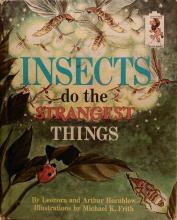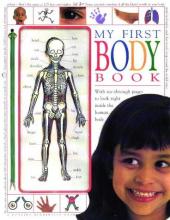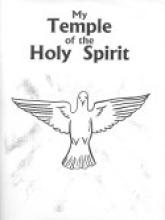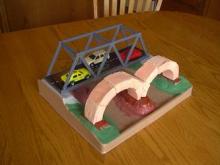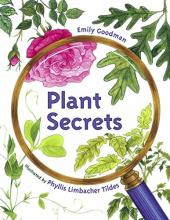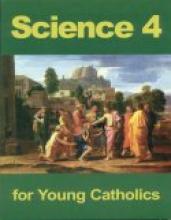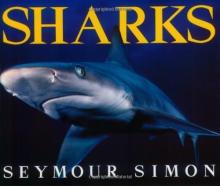Science Elementary
Insects do the Strangest Things
Interesting and informative stories of the strange but fascinating behavior of various types of insects. The pictures are of the somewhat cheezy 60s variety, but the text is quite good and written at approximately a second grade level.
My First Body Book
This is a fun and very kid-friendly introduction to the body and its various functions and capabilities. It begins with a set of transparent overlays which portray the skeleton (skeletal system), the heart, lungs and blood (cardiovascular system), and the brain and nerves and digestive system. When I first got this book (back in the days when I was a DK representative for a short time) I worried that this book wouldn't hold up very well. After more than three years of use by little hands, I have to admit it's done quite well.
The rest of the book provides simple text, funny illustrations and the trademark DK photos covering the following topics: faces, skin and hair, muscles and bones, blood and heart, lungs and breathing, digestion, brain and nerves, eyes and seeing, ears and hearing, taste and smell, touch, growing up and "all about you."
The digestion is handled quite politely (no graphic pictures) and I was pleasantly surprised at how well the "growing up" section was handled. It begins with a very sweet and simple explanation of conception "A baby starts when a tiny sperm from the father joins with an egg inside the mother. The egg attaches itself to a part of the mother called the womb..." (pg. 29) and goes on to descriptions of the various stages of development of an unborn baby. Although the term fetus is mentioned, the baby is called a baby throughout the text!!! Again – no yucky pictures but not twaddly or dumbed-down either.
My Temple of the Holy Spirit
Subtitled a Catholic Science Hands On Program of the Human Body, this is a program best used with kids in grades 4 to 8. My Temple of the Holy Spirit is a very practical study of seven of the systems of the body from a Catholic and pro-life perspective. It covers various systems of the body, but not the reproductive systems, the integumentary system, or all of the excretory system. It is thoroughly Catholic, with the Faith integrated throughout. It is user-friendly for both parent and child and very nonthreatening, even for those who are frightened of teaching science.
A typical lesson has a list of terms with definitions that will be used later, the material to be learned with the vocabulary words underlined, a page of comprehension questions, a diagram to label, a list of supplementary activities, and "Fun Facts." The supplementary activities range from Bible reading to field trips to experiments to research papers. The wide range of activities make it easy to adapt this program for students of different ages. Patterns and directions for making a life-sized human body outline with cloth organs are in the back of the book. So are several activities covering all the systems studied, which can be used as a final exam if desired. To use this program properly, it is essential to have access to a library or lots of science books.
This is not a full-year study nor one for high school. Bearing those limitations in mind, this Catholic, pro-life, easy-to-use, hands on, multi-level, and inexpensive study on systems of the human body is an excellent choice for science study.
Update April 2024: The text of this book has been combined with Catholic Boys & Girls Health by Dr. Mary Ann Grobbel into Behold and See 4: Human Anatomy and Health, from Catholic Heritage Curricula. The content has been revised into a full-color spiral-bound "work-text" with a more attractive layout, room for students to write their answers, and color illustrations.
Old Mother West Wind and other stories
You are probably already familiar with the animal stories written by Thornton Burgess in the early 1900s. These go by titles such as "The Adventures of Johnny Chuck" and "Old Mother West Wind" and are sold by Dover Press for only $1. Each book tells about the life and adventures of various animals in such a way that the child easily learns about animal habitat and woodland lessons. In "Old Mother West Wind" the book starts off telling about her children, "The Merry Breezes" who carry scents of animals as they fly along ruffling (tickling) the fur of different animals. Later in the book we read about a bird who, one night, almost looses her eggs to a skunk without a strip. Now we have an idea of why God gave skunks stripes. My daughter silently reads a chapter from these books each day and narrates them at dinner. These are written at the second grade level.
Our Amazing Bridges
Bridge-Building Kit
Plant Secrets
I confess I have a stack of books here waiting... some about libraries under different themes. Alas, the warmth today brings our minds to travel towards a green world, full of sunshine and growth.
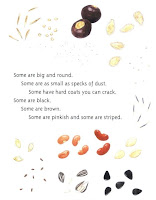
That, coupled with my 4th grader exclaiming, "Mom, you should blog about this nice book!" has me posting this gem found at the library under new books just yesterday! She is an avid picture book reader and her enthusiasm for this colorful, plant-full book alone is a thumbs up for me!
Product description:
Plants come in all shapes and sizes, but they go through the same stages as they grow. Using four common plants, young readers learn about a plant's life cycles. Simple text and colorful illustrations show the major phases of plant growth: seed, plant, flower, and fruit. Back matter offers more information on each plant, as well as on each stage of growth.
Pyramid
Science 4 for Young Catholics
This 4th grade science textbook is nicely laid out and easy to use. Each chapter begins with a brief biography of a famous Catholic scientist, like Copernicus, Mendel and Pasteur, followed by four literal comprehension questions. The goals of the chapter and an outline are also provided at the beginning of each chapter. Interspersed among the text of the chapters are experiments, activities, and review questions. There are also review study pages at the end of the chapter.
Since it is a Catholic text, the author inserts things to think about which are distinctly Christian. For example, in the chapter about plants, the text offers an explanation of the plant dying to release a seed. There is a picture of a Crucifix on the page and an accompanying caption explains, " . . .a flower dying to produce a seed reminds us of how Jesus suffered and died in order that we might have new life."
The topics covered in this course are The Heavens; The Earth, Moon and Space; Oceans, Weather and Climate; Water and Material Things; Machines; Living Things; The Wonder of Man; and Health. Many states require a health component and this last chapter handily takes care of that requirement.
The topics are arranged in the order of creation, which is great for religion, but not necessarily good for the study of science. If done that way, the student starts with things which are least known to him (the heavens), instead of those things which are most known. However, most secular science texts also start with things least known, like cells. A significant drawback to the text is that there are few if any true "thinking" questions. The questions for review are all explicitly literal comprehension. Even the experiments and activities do not ask the student to reflect about what he has observed or to draw conclusions. That seems to leave out a very important element in the study of science.
If supplemented with discussion and hands on activities, this could be a useful text because of the information it provides. The chapters do not rely or build upon one another, so you could teach the topics in any order you choose.
Although there are many lovely illustrations in this book, I found the cheesy illustrations (such as a cartoonish picture of a sun with sunglasses in the astronomy section) annoying and in conflict with how I want my children to learn to love science. (A.V.H.)
Sharks
Seymour Simon is well-known for his numerous photo-essay-type of picture books for elementary-aged students. Most of his books center around one specific well-defined topic and are illustrated with full-page photographs of the subject. This book is no exception. Sharks is an unpaginated, 32-page picture book, with approximately half of those pages containing full-color photographs of sharks.
The text begins by reassuring the young reader that shark attacks on humans are relatively uncommon and continues with a comparison between sharks and other types of fish. Several pages describe the characteristics of different kinds of sharks, leaving the reader with a sense of how varied these fish truly are. There are also two pages that describe the different types of shark reproduction; for my young non-readers, I skipped the paragraphs that described "external fertilization" and "internal fertilization". The book closes by reminding the children that sharks do not attack people very often, despite what they may have heard, and gives several suggestions for staying safe whilst swimming.
As usual for Seymour Simon's books, the photographs are of high quality and are truly the highlight of the book. Two of the photographs show the teeth and jaws of sharks up close, and my sensitive 5-year-old was horrified. Even so, my 3-year-old was fascinated. One photograph shows the birth of a lemon shark, which is born live as are human babies; my little readers didn't understand this and breezed right by it. The most popular picture of all was that of a hammerhead shark. The children were incredulous that any living creature could look so odd. Weeks later, they still talk about the hammerhead and are anxious to see one at an aquarium.

